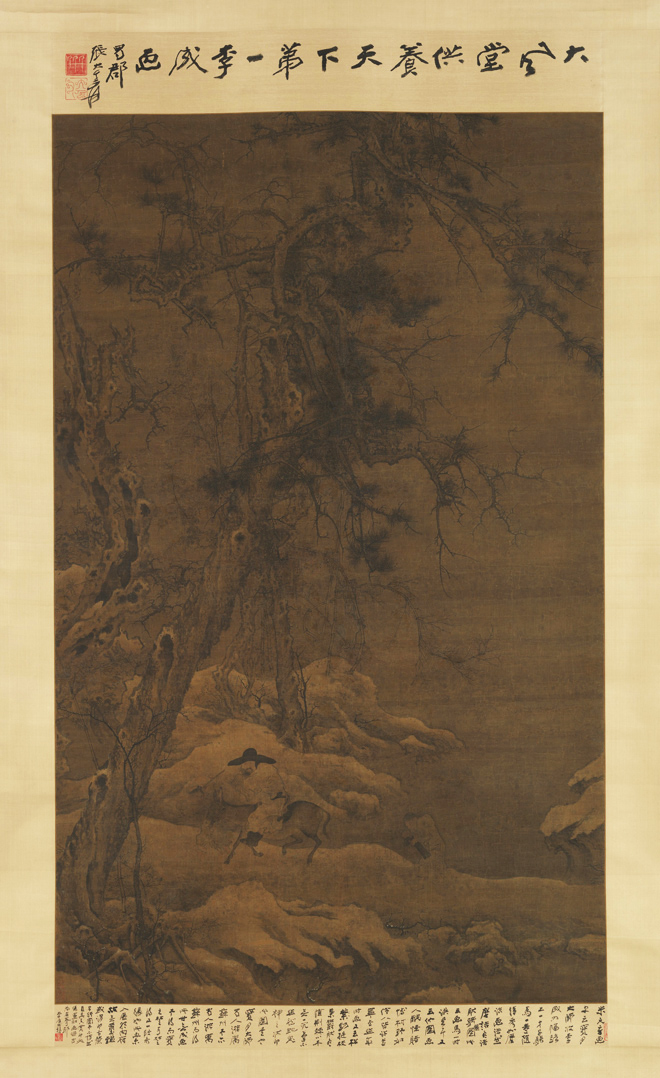Travelers in a Wintry Forest (寒林策驢圖)
Attributed to Li Cheng (李成, 919–967), Five Dynasties period (907-960)
Hanging scroll, ink and color on silk, 161.9 x 100.3 cm, The Metropolitan Museum of Art, New York
During the tenth and eleventh centuries, majestic trees rivaled panoramic landscapes as sources of artistic inspiration. The hermit-painter Jing Hao (荊浩, ca.880–940), for example, saw in the pine tree "the moral character of the virtuous man," while the preeminent landscape master Li Cheng is said to have painted desolate scenes of winter because "men of virtue are now found only in the wilderness."
Travelers in a Wintry Forest follows a well-known composition by Li Cheng as described by Mi Fu (米芾, 1051–1107) in his History of Painting (畫史). The scene is a microcosm of the natural cycle of growth and decay, with the great pine, symbolizing the virtuous gentleman, surrounded by trees ranging from youthful saplings to a shattered ancient hulk. The stoic silence of the wintry forest is matched by the unyielding spirit of the scholar on his donkey—the noble recluse who has entered the mountains to rediscover in nature the moral order that is lost in the human world.
